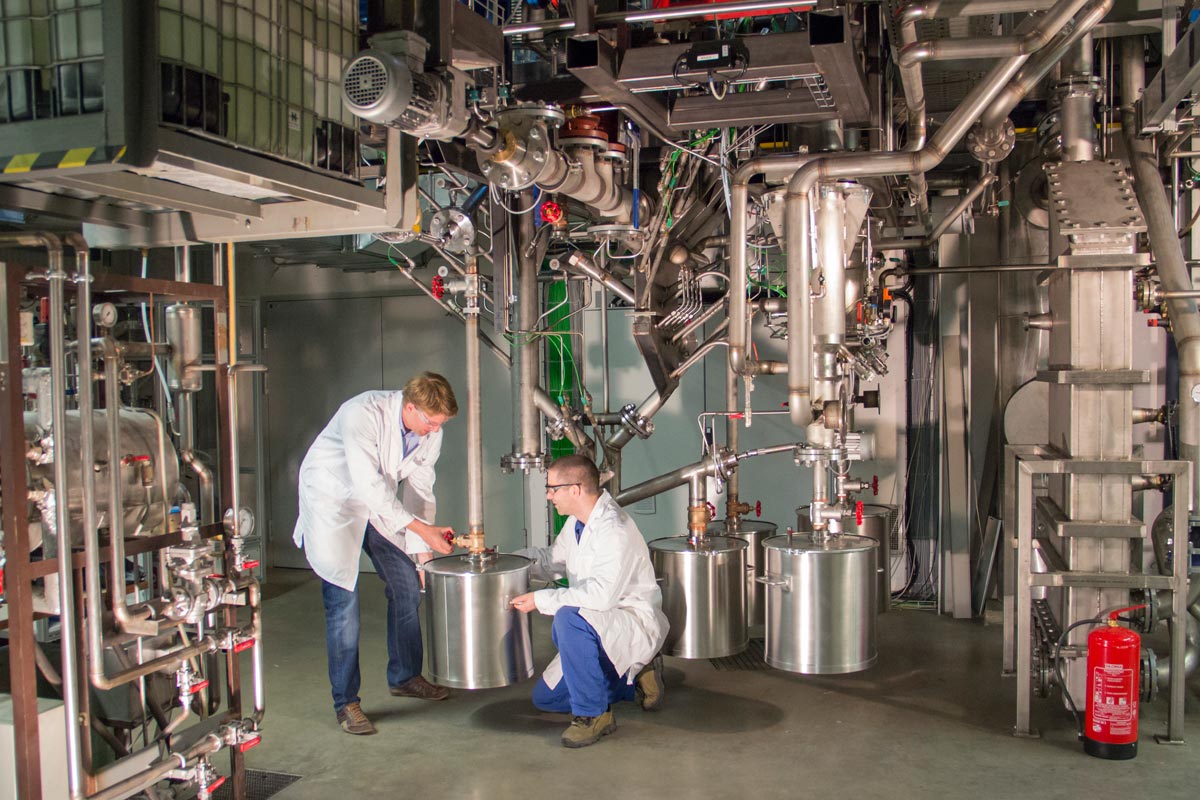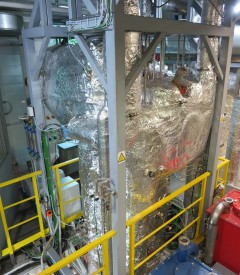At the Institute of Chemical, Environmental & Biological Engineering of TU Wien (Vienna University of Technology), in collaboration with voestalpine, work is currently in progress on further developing a new process in which a hydrogen-rich gas stream is produced from biomass. The gas should be used in iron and steelmaking. The long-term aim is to integrate renewable sources of energy in the production of integrated steelworks and to improve the carbon-dioxide balance sheet.
The so-called Sorption Enhanced Reforming (SER) Process was developed in the earlier ERBA1 project at TU Wien. The process involves steam reforming of solid biomass in a special fluidized-bed system with lime as bed material. Here biomass is converted at high temperatures to yield two separate gas streams, one rich in hydrogen, the other rich in carbon dioxide.
Renewable sources of energy in iron and steelmaking
In blast furnaces hot metal is obtained from treated iron ores in a continuous reduction and melting process. The iron oxide contained in the ore must be separated into oxygen atoms and iron atoms. For this process carbon monoxide, derived from using coke, is needed. But hydrogen can also serve as a reducing agent to a certain extent. So far investigations have revealed that the share contributed by renewable sources of energy can be increased in blast furnaces with the new process, without impairing the quality of the final products.
An integrated steelworks involves a large number of production steps, from pig-iron to finished steel products. In future the hydrogen-rich gas produced could be employed in various process steps.
In ERBA II the entire process chain, from producing the hydrogen-rich gas stream to using it in a steelworks, is now further investigated in collaboration with voestalpine. A research plant (100 kW power) has been set up at TU Wien for this purpose; here the efficiency, rate of hydrogen production and selective carbon-dioxide transport of the process are being examined and further improved, so as to achieve the technical prerequisites for implementation in scaled-up industrial demonstration facilities.
Below-Zero-Emission
The biomass reforming process delivers a hydrogen-rich gas stream plus an off-gas rich in carbon dioxide. If this carbon dioxide is returned to the environment, the carbon cycle is closed, since only the carbon dioxide previously stored in the biomass is emitted. The process is thus carbon-dioxide-neutral. The carbon-dioxide balance sheet can be improved even further if the carbon dioxide in the off-gas is captured and utilized. In this case we speak of “negative” emissions and of a “below-zero emission” process.
Results so far show that the approach is technically feasible. However, implementing it under current conditions with high-grade biomass such as wood chips is not yet economic. The next stage of research is meant to make other low-cost biogenic raw materials (e.g. forest residue wood, bark, sugar cane bagasse and other biogenic residues) usable as well.
1 ERBA = Erzeugung eines Reduktionsgases aus Biomasse mittels Anwendung des SER-Prozesses (Generation of a reduction gas from biomass using the SER process)

